
How to Use TDS Sensor Module: Examples, Pinouts, and Specs
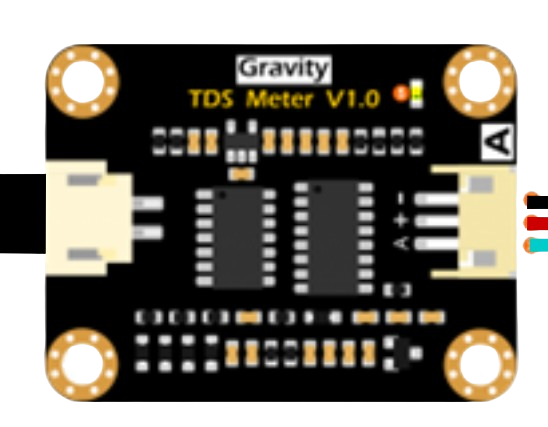
 Design with TDS Sensor Module in Cirkit Designer
Design with TDS Sensor Module in Cirkit DesignerIntroduction
The Total Dissolved Solids (TDS) Sensor Module is an electronic device designed to measure the concentration of dissolved solids in water. This measurement is indicative of the water quality and is essential in various applications such as water purification systems, environmental monitoring, aquariums, and hydroponics. The TDS level provides insight into the purity of water and the presence of minerals, salts, and other soluble matter.
Explore Projects Built with TDS Sensor Module
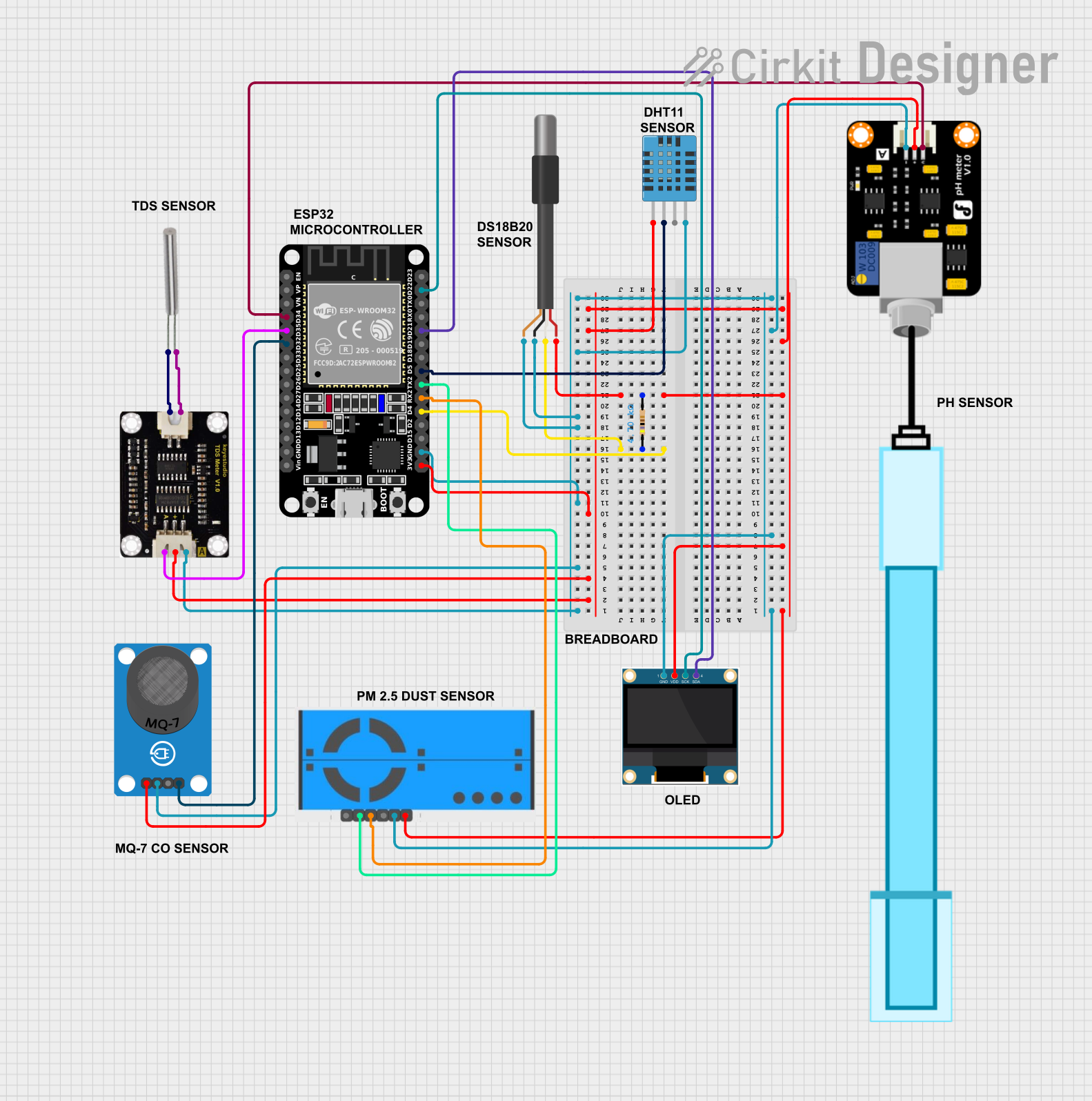
 Open Project in Cirkit Designer
Open Project in Cirkit Designer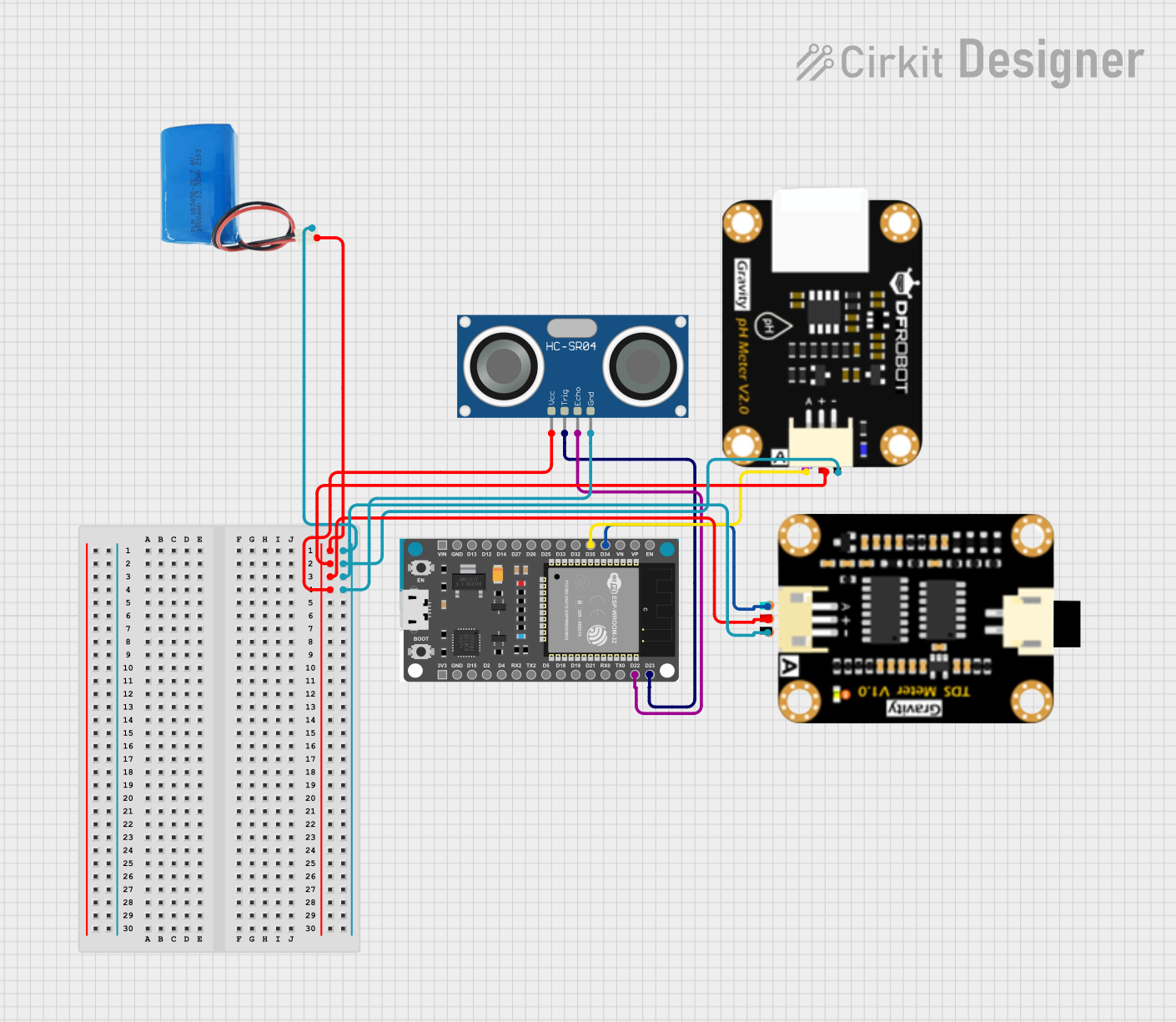
 Open Project in Cirkit Designer
Open Project in Cirkit Designer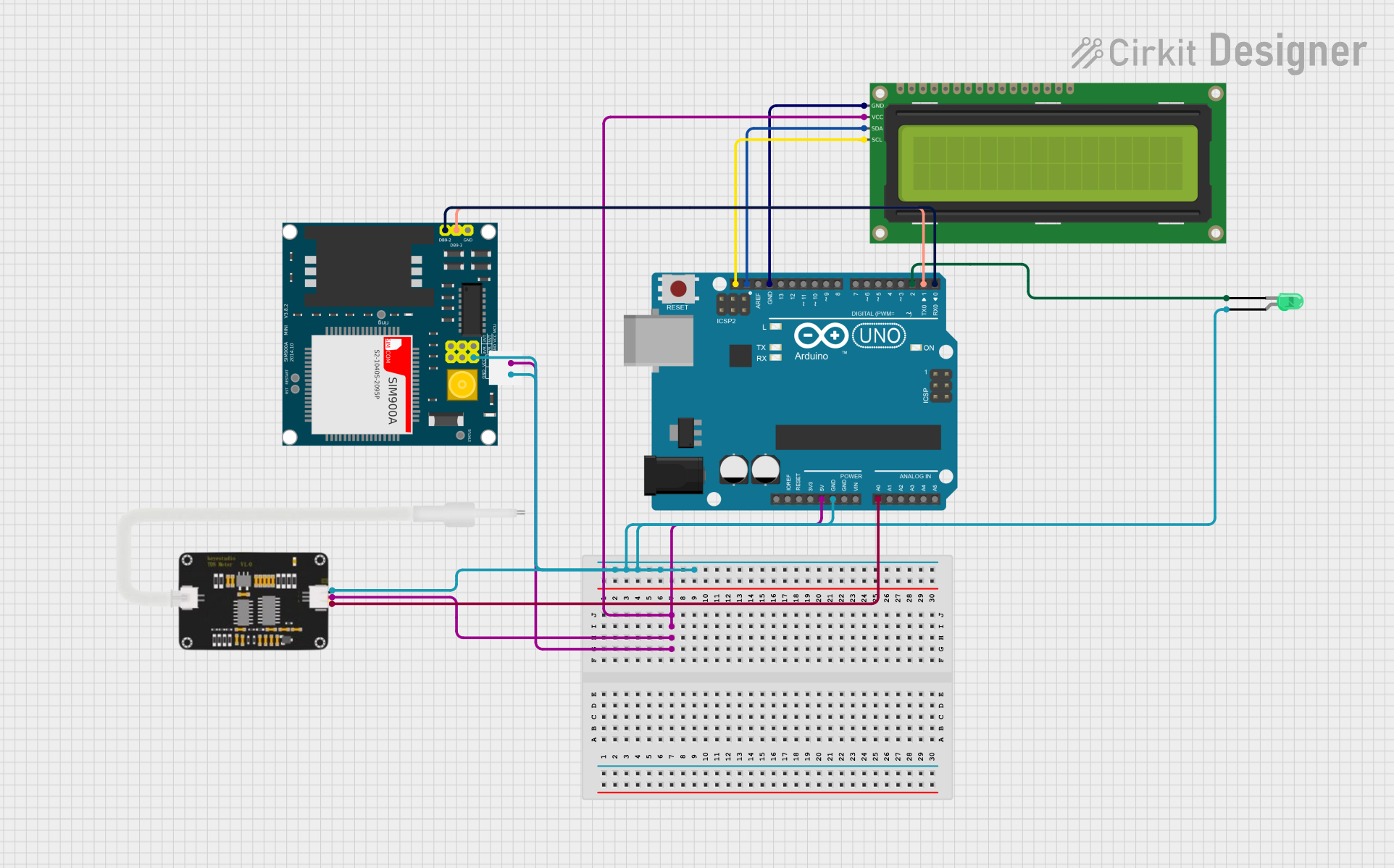
 Open Project in Cirkit Designer
Open Project in Cirkit Designer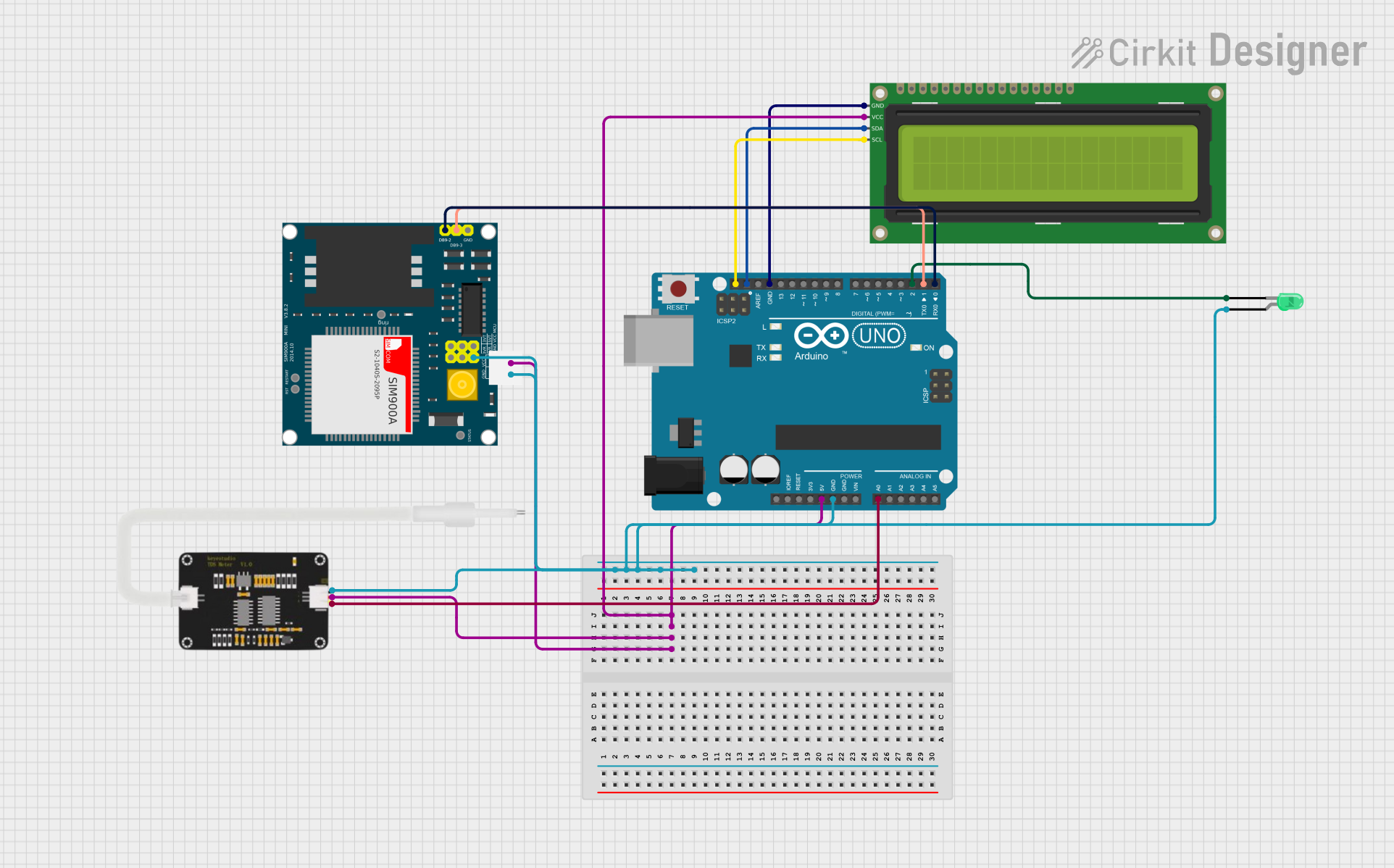
 Open Project in Cirkit Designer
Open Project in Cirkit DesignerExplore Projects Built with TDS Sensor Module

 Open Project in Cirkit Designer
Open Project in Cirkit Designer
 Open Project in Cirkit Designer
Open Project in Cirkit Designer
 Open Project in Cirkit Designer
Open Project in Cirkit Designer
 Open Project in Cirkit Designer
Open Project in Cirkit DesignerTechnical Specifications
Key Technical Details
- Measurement Range: 0-1000 ppm (parts per million)
- Accuracy: ±10% F.S (Full Scale)
- Operating Voltage: 3.3V to 5.5V
- Output Voltage: 0-2.3V (corresponding to 0-1000ppm)
- Operating Current: 3-6mA
- Operating Temperature: 0-50°C
Pin Configuration and Descriptions
| Pin Number | Pin Name | Description |
|---|---|---|
| 1 | VCC | Power supply (3.3V to 5.5V) |
| 2 | GND | Ground |
| 3 | AOUT | Analog output voltage |
| 4 | TEMP | Temperature sensor output (optional) |
Usage Instructions
Integration with a Circuit
- Power Connection: Connect the VCC pin to a 3.3V or 5V power supply and the GND pin to the ground of the power source.
- Signal Output: Connect the AOUT pin to an analog input pin on your microcontroller, such as an Arduino UNO.
- Temperature Sensor (Optional): If the module includes a TEMP pin, connect it to another analog input pin to measure temperature.
Calibration and Measurement
- Calibration: Before taking measurements, calibrate the sensor using a solution with a known TDS value.
- Reading Values: Use the microcontroller's ADC to read the analog voltage from the AOUT pin. Convert this voltage to TDS value using the calibration curve obtained during calibration.
Best Practices
- Ensure the sensor is fully immersed in water but not touching the bottom or sides of the container.
- Regularly clean the sensor to prevent residue buildup, which can affect readings.
- Avoid exposing the sensor to direct sunlight or chemicals that could damage it.
Example Code for Arduino UNO
// Define the analog input pin and the Vref
const int TDS_PIN = A0;
const float VREF = 5.0; // Analog reference voltage
void setup() {
Serial.begin(9600);
}
void loop() {
int analogValue = analogRead(TDS_PIN);
float voltage = analogValue * VREF / 1024.0;
float tdsValue = voltage * 1000; // Convert voltage to TDS value (ppm)
// Print the TDS value to the serial monitor
Serial.print("TDS Value: ");
Serial.print(tdsValue);
Serial.println(" ppm");
delay(1000); // Wait for a second before the next reading
}
Troubleshooting and FAQs
Common Issues
- Inaccurate Readings: Ensure the sensor is calibrated correctly. Check for any residue on the sensor and clean it if necessary.
- No Readings: Verify that the sensor is correctly powered and that all connections are secure. Check the analog pin connection on the microcontroller.
FAQs
Q: Can the TDS sensor measure saltwater? A: Yes, but the measurement range may be limited. Saltwater typically has a higher TDS value than the sensor's maximum range.
Q: How often should I calibrate the TDS sensor? A: Calibration frequency depends on usage, but it's generally recommended to calibrate the sensor every month or after any maintenance.
Q: Is the TDS sensor waterproof? A: The sensor probe is waterproof, but the electronic components and connections are not. Ensure only the probe is immersed in water.
Q: Can the TDS sensor operate at temperatures above 50°C? A: Operating the sensor above its specified temperature range can damage the sensor and lead to inaccurate readings.
For further assistance, consult the manufacturer's datasheet or contact technical support.